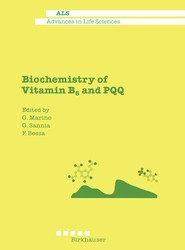(To see other currencies, click on price)
MORE ABOUT THIS BOOK
Main description:
Neuropeptides rank among the phylogenetically oldest interneuronal signal substances. In the concept of neuro-secretion they were identified as neurohormones by which - via the blood - the brain regulates peripheral functions. It is now evident that the neuropeptides act as neurotransmitters/-modulators, as (neuro-)hormones, and paracrine or autocrine signal substances in diverse parts of the body. This book reviews, in several comprehensive articles written by distinguished specialists, the state of the art in the field of neuropeptides and peptidergic neurons. Special topics concern molecular aspects of processing, release and degradation of neuropeptides, receptors and signal transduction, comparative and behavioural aspects, and immunoregulatory effects of neuropeptides and their involvement on pathology of the central nervous system.
Contents:
I. General considerations on peptidergic neurons.- Retrospective and prospectives for research on neurosecretion.- Patterns of peptide discharge - implications for Dale's principle.- The paraneuron revisited.- II. Biosynthesis, release and degradation of neuropeptides.- Role of convertases in the processing of neuropeptides and neurotrophins.- Biosynthesis of neuropeptides in cnidarians: evidence for unusual neuropeptide precursor processing enzymes.- Evidence for a receptor-mediated mechanism for sorting proopiomelanocortin to the regulated secretory pathway.- Molecular mechanisms of neurotransmitter and neuropeptide release.- Scanning electron microscopy of an active neurohaemal area, the cockroach (Periplaneta americana) corpora cardiaca: looking at neurosecretion from an unprecedented viewpoint.- Varicosity formation and non-synaptic release of large core vesicles in the co-culture of neuronal and smooth muscle cells.- Cell-surface peptidases involved in neuropeptide metabolism: an overview.- The TRH-degrading ectoenzyme: a putative signal-terminator within the central nervous system and adenohypophyseal regulator of hormone secretion.- The function of glial cells in the inactivation of neuropeptides.- III. Neuropeptide receptors.- Molecular biology of peptide receptors.- Reduction of somatostatin-14 binding to the rat somatostatin receptor subtype 3 by Na+ is enhanced by mutation of the glutamate residue 92 in the transmembrane domain II.- Somastatin receptor subtypes in human astrocytes and gliomas: Influence of cultivation process.- Coexistence of angiotensin receptors and angiotensin in hypothalamic neurons of the rat.- Bradykinin binding sites on isolated cultured dorsal root ganglion cells demonstrated with gold-labelled bradykinin.- IV. Comparative aspects.- The invertebrate neurosecretory cell: state of the art.- Neurotrophin-like immunoreactivity in the nervous system of the earthworm Eisenia foetida (Annelida, Oligochaeta).- The Met-callatostatins of the bowfly Calliphora vomitoria: post-translational modifications, neuronal mapping and functional significance.- Secretory stimulation induces the preferential release of newly synthesized peptide hormones by the neuroendocrine adipokinetic cells of Locusta migratoria.- Tachykinin- and FMRFamide-like immunopositive neurons in the developing central complex of the beetle Tenebrio molitor.- Comparative aspects of neurohypophyseal hormone genes.- V. Signal transduction and integrative system.- Signal transduction and second messengers in neurosecretory cells.- Multi-signal transduction of moth pheromone biosynthesis-activating neuropeptide (PBAN) and its modulation: Involvement of G-proteins?.- Analysis of the effect of pituitary adenylate cyclase-activating polypeptide (PACAP) on growth hormone (GH) secretion in GH3 cells.- Expression of vasotocin gene during metamorphosis in the bullfrog hypothalamus.- Basal-medial hypothalamus conducts the development of GnRH neurons.- VI. Behavioural effects of neuropeptides.- Behavioural effects of neuropeptides: central and peripheral nechanisms of action of vasopressin.- Effects of tank colour and stress on melanin-concentrating hormone gene expression in the rainbow trout.- Endocrine influence on vasopressin-enhanced retrieval of a passive avoidance response.- Functional evidence for a transmission of peptides along the olfactory systems into the brain in healthy humans.- C-type natriuretic peptide (CNP) in the mammalian pineal gland: An endogenous autocrine peptide?.- VII. Neuropeptides in immune defense and pathology.- The role of neuropeptides in immunoregulatory processes.- Neuropeptides in hypothalamic pathology.- Impact of somatostatin receptor scintigraphy in differential diagnosis of meningeoma.- Uptake of I-125 radiolabelled dynorphin in glioma cell cultures.- Parathyroid hormone-related protein (PTHrP) - a paracrine factor in astrocytes and an autocrine factor in astrocytomas.- Author index.
PRODUCT DETAILS
Publisher: Springer (Birkhauser Verlag AG)
Publication date: October, 2011
Pages: 388
Weight: 668g
Availability: Available
Subcategories: General Issues, Neurology, Neuroscience
From the same series






